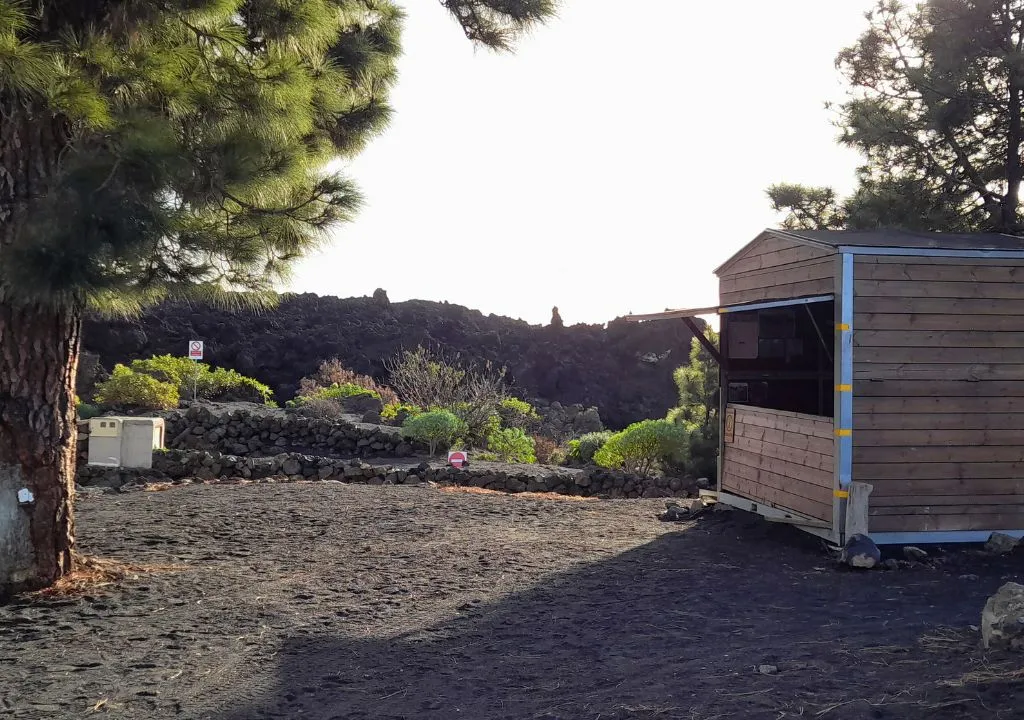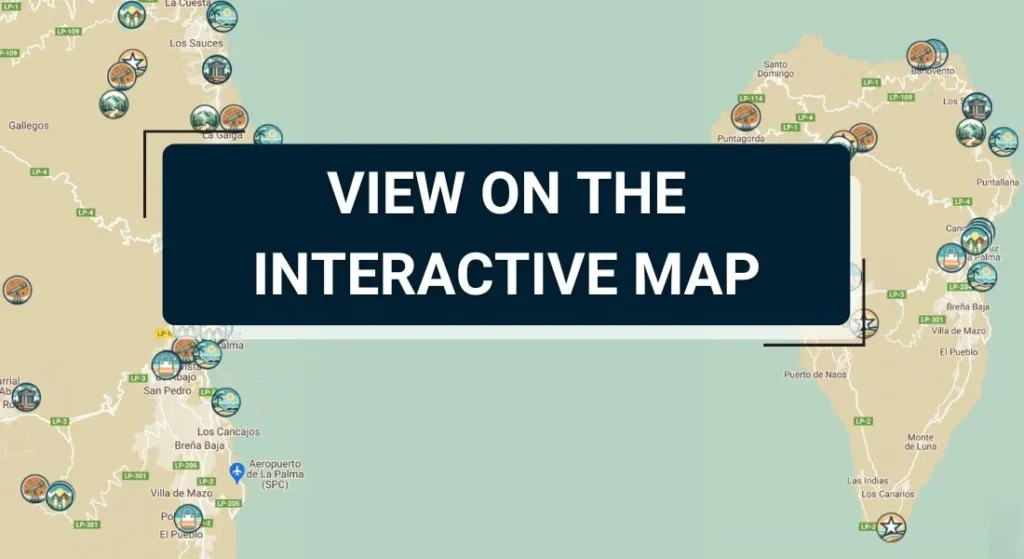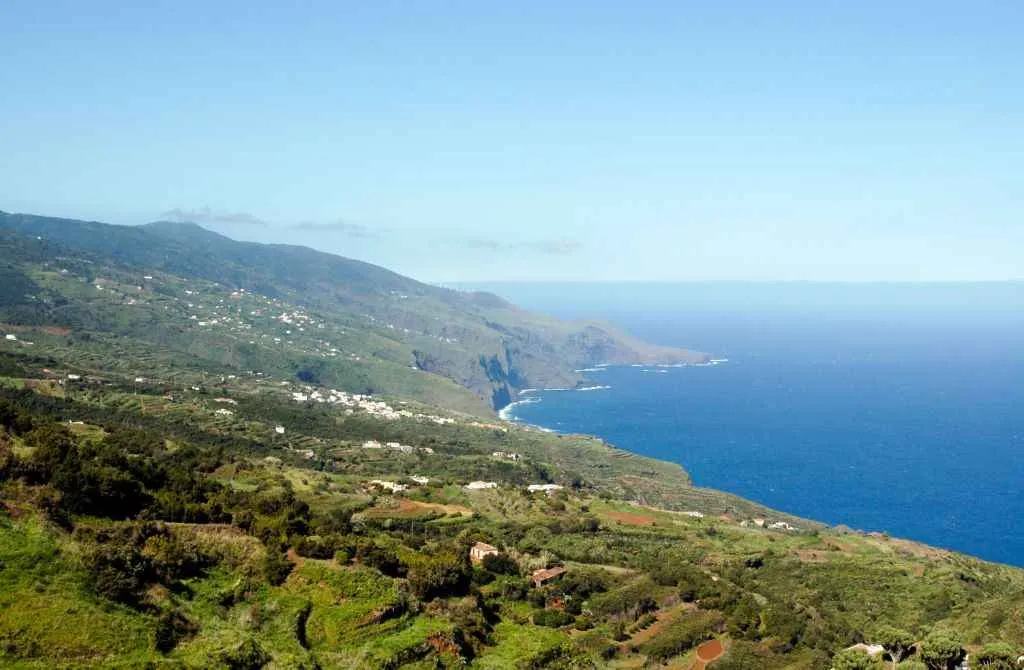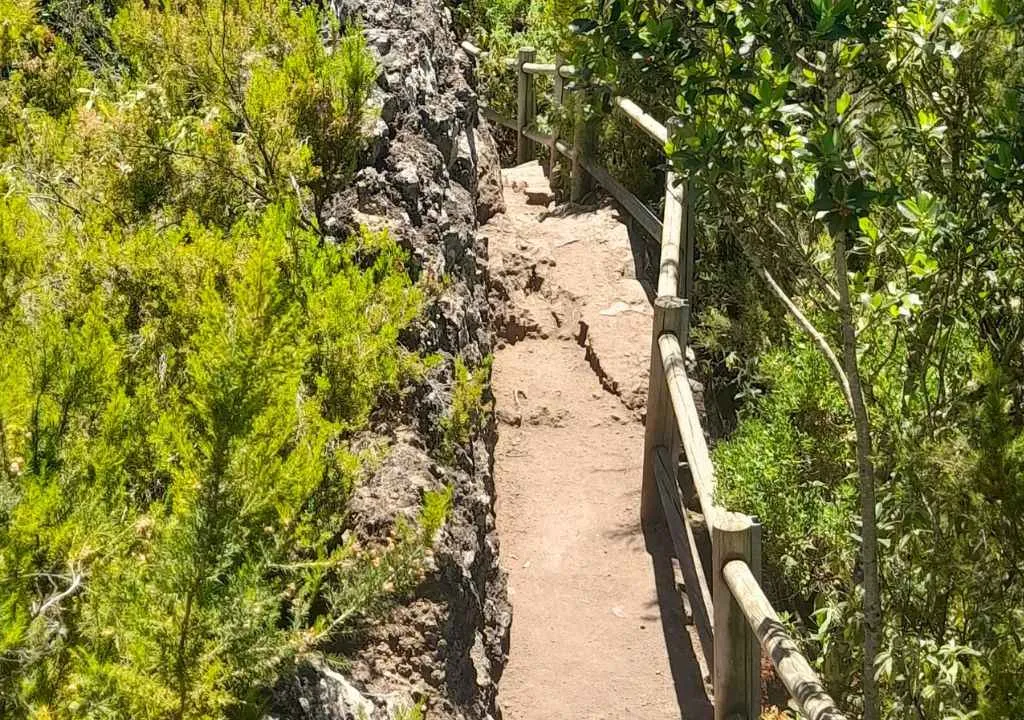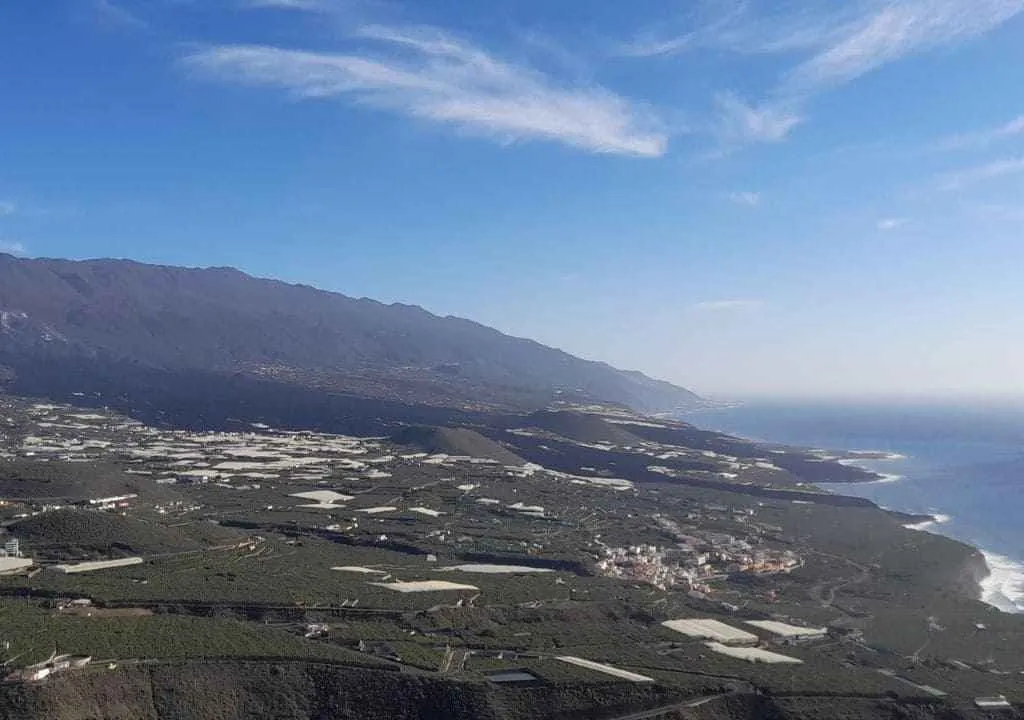In the heart of Tacande, one of the areas most affected by the 2021 eruption of the Tajogaite volcano, stands this impressive viewpoint, now the official spot to closely observe the crater and lava flows that forever changed the Aridane Valley’s geography.
A place full of emotion, where nature’s destructive power and its ability to regenerate meet: green pines sprout on black lava while the majestic volcanic cone towers before your eyes.
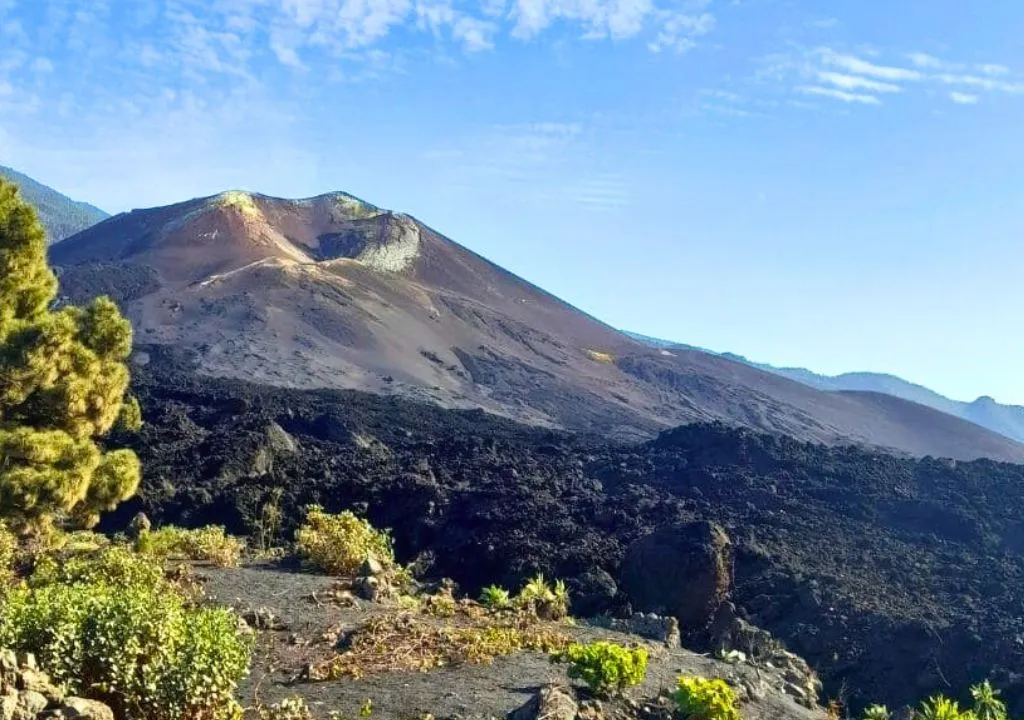
Key information
| Feature | Detail |
|---|---|
| Approx. altitude | 600 m |
| Access | End of Carretera San Nicolás, Tacande, El Paso |
| Parking | Free, next to restricted access barrier |
| Information centre | Small wooden hut managed by Cabildo de La Palma |
| Best for | Photography, environmental education, crater & lava observation |
Views & highlights
- From Mirador de Tacande, you face an awe‑inspiring scene: the Tajogaite’s reddish, smoky summit and massive solidified lava flows that devastated roads, whole neighbourhoods and farmland.
- You can clearly see the flow that blocked Carretera San Nicolás, forming a wall of lava up to 6 m high.
Close‑up, the rough lava texture contrasts with the resilient new sprouts of Canary pine, a symbol of nature’s recovery. - The numbers are staggering: in areas like Todoque and Montaña Rajada, the lava reached heights of up to 70 m.Here you can truly feel the dual nature of life: brutal destruction and quiet resilience.
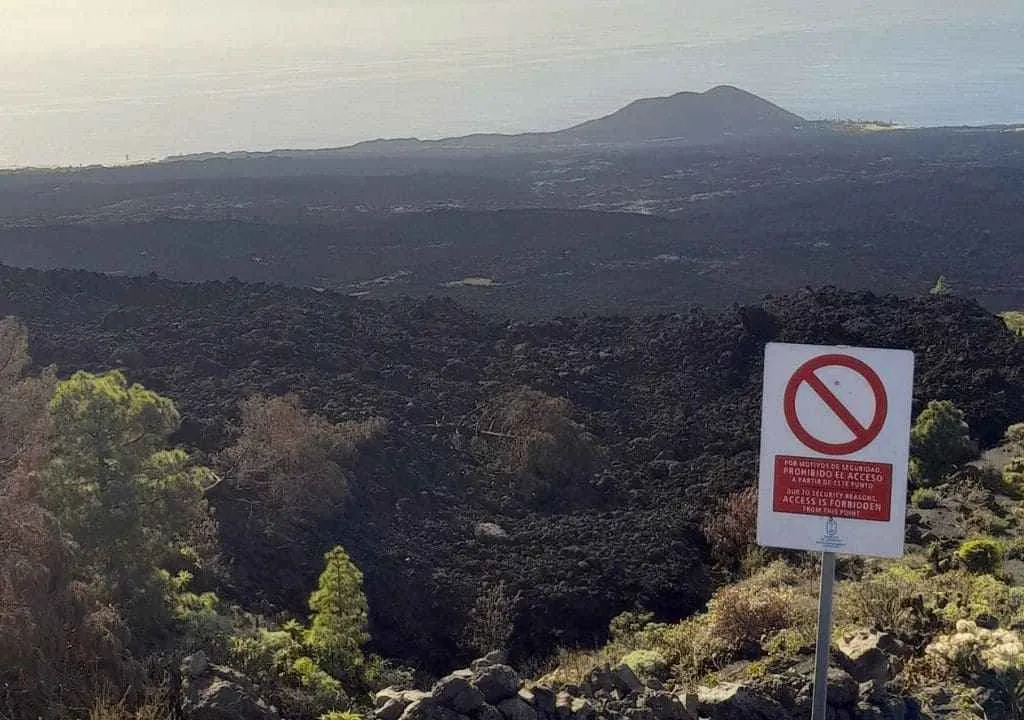
YOUR EXPERIENCE SHINES HERE
If you’ve visited this place, share your impressions and leave a small trace of your journey. Help other travelers discover the true beauty of La Palma.
*Your review is completely anonymous
Practical tips
- Short, easy walk: from the parking area there’s a 5‑minute path, manageable for most people.
- Respect the residents: Tacande remains inhabited. Please keep your voice down and behave respectfully.
- Obey signs. Don’t cross fences or “No entry” signs: the lava beyond is unstable and dangerous.
- Wear proper shoes: the final stretch is uneven.
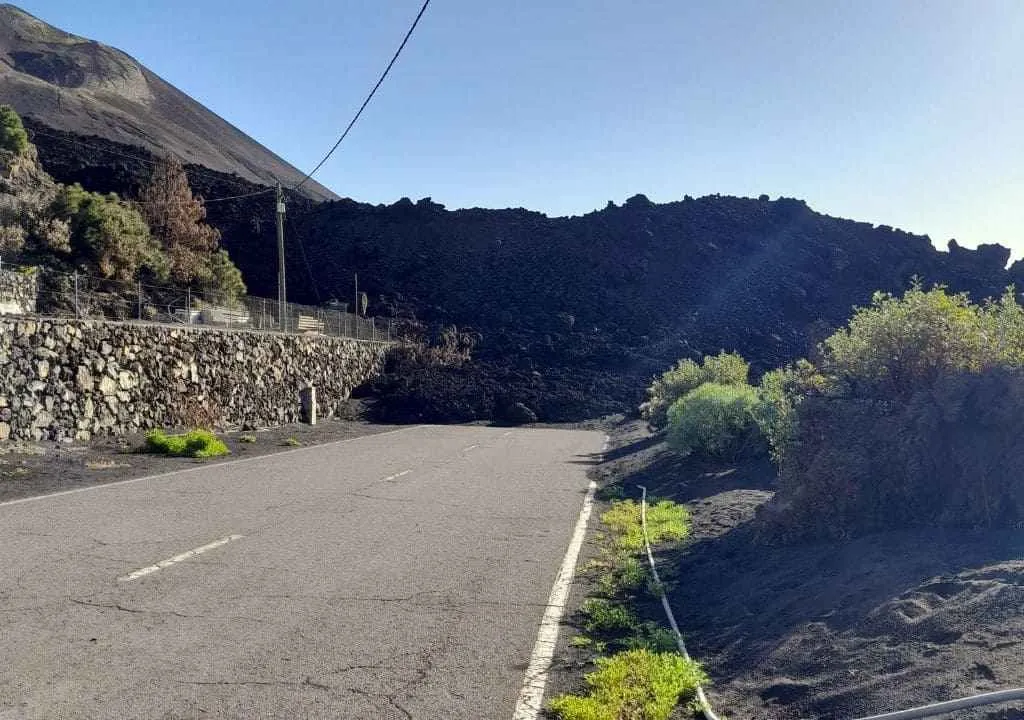
How to get there
- By car:
From LP‑3 in El Paso, turn towards Tacande and follow signs for Carretera San Nicolás. Drive to the end, park near the barrier, and walk a few meters to the hut and viewpoint. - Guided tour:
Several local agencies offer approx. 8‑hour guided tours, including transport, stops at other volcanic viewpoints and detailed explanations about the eruption’s impact.
